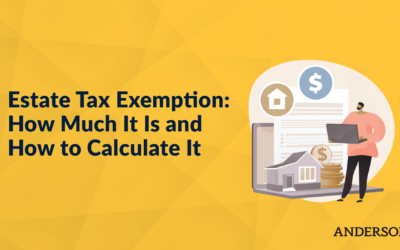An IRA is an individual retirement account. This type of account allows a retail investor to save for the future by investing in a managed portfolio.
Key Takeaways about Rollover IRAs
- Understand the importance of IRA rollovers: IRA rollovers allow you to transfer funds from one retirement account to another without incurring taxes or penalties, providing you with more control over your investments and potential tax advantages.
- Know the eligibility criteria: To be eligible for an IRA rollover, you must have funds in a qualified retirement account, such as a 401(k) or another IRA. Additionally, you need to follow specific rules and timelines to ensure a smooth rollover process.
- Choose between a direct rollover or indirect rollover: A direct rollover involves transferring funds directly from one retirement account to another, while an indirect rollover requires you to receive the funds and redeposit them into another eligible retirement account within 60 days. Consider the pros and cons of each method before making a decision.
- Be aware of the 60-day rule: If you choose an indirect rollover, make sure to complete the process within 60 days. Failure to do so may result in taxes, penalties, or the loss of your retirement savings.
- Understand the difference between traditional and Roth IRA rollovers: A traditional IRA rollover allows you to transfer funds from a traditional retirement account into a traditional IRA, while a Roth IRA rollover involves moving funds from a traditional account to a Roth IRA. Each option has different tax implications, so consult with a financial advisor to determine which one is suitable for your financial goals.
- Consider the potential tax consequences: Depending on the type of retirement account and rollover you choose, you may be subject to taxes. Evaluate the tax implications carefully and consult with a tax professional or financial advisor to understand the potential impact on your financial situation.
- Seek professional guidance: IRA rollovers can be complex, and making mistakes can have significant financial consequences. It’s advisable to seek guidance from a qualified financial advisor or tax professional who can provide personalized advice based on your specific circumstances.
Types of Individual Retirement Accounts
There are several types of IRAs. The Roth IRA allows you to make after-tax contributions and affords tax-free withdrawals in retirement. A traditional IRA allows you to make pre-tax contributions into a tax-deferred account, and withdrawals are subject to taxes in retirement (but this may not be such an issue if you are in a lower tax bracket).
Take note that after-tax and pre-tax refers to your income. When it comes to a Roth IRA, it won’t be taxed because you already paid taxes on your money (certain exceptions apply), and with a traditional IRA, since your money hasn’t been taxed yet, you pay later.
Either way, both the traditional and Roth IRAs are independently managed. You can choose whichever financial institution you’d like to manage and service your retirement account, whether it’s an international bank or a local investment firm. The IRA owner can choose to place the retirement savings that constitute his IRA funds into the care of a plan administrator or choose to manage their own self-directed IRA.
A self-directed IRA should not be confused with a SEP IRA, which is an IRA geared toward self-employed individuals and may or may not be under the care of an IRA custodian.
IRA vs 401(k) vs 403(b)
The ultimate decisions on how an IRA is managed lie with the IRA owner. Whether they decide to put decision-making powers into the hands of a financial advisor, or take a DIY approach and pick and choose how to invest themselves.
This is in contradistinction to a company-sponsored retirement plan, like a 401(k). A 401(k) allows employees to allocate a portion of their paycheck into a retirement account, and sometimes the company will match that contribution. Employees can choose between a variety of investment options, often with mutual funds and/or stock in the company if it’s publicly traded.
However, the details of how this employer-sponsored plan works are out of the hands of employees. Tangentially, a 401(k) is a retirement plan offered by for-profit companies, while a 403(b) is offered by nonprofits and government organizations. Some companies also offer employees the opportunity to contribute to a SIMPLE IRA, which stands for Savings Incentive Match Plan for Employees IRA. The company matches contributions to such a plan, but the IRA funds in the plan are managed by the employee.
As you can see, there are a number of retirement plan options available to employees, depending on where they work. But what happens if you’re employed somewhere and change jobs—voluntarily or not? This may be a time when you want to take your assets out of a company-sponsored 401(k) and move them into an IRA rollover account.
IRA Rollover Rules & Frequently Asked Questions
What is a Rollover IRA?
A rollover IRA is an account that receives a “rollover” of your funds from a different retirement account, namely a 401(k), 403(b), or profit-sharing plan. This is different from a transfer of assets between two of the same type of retirement account—like from one Roth IRA to another Roth IRA—even if you’re removing the assets from one institution and having them sent to another.
A rollover IRA that takes the assets from your employer-sponsored retirement plan and turns them into IRA assets can become either a traditional IRA or a Roth IRA. You should schedule a consultation with an Anderson Advisor’s tax expert about which type of IRA account would be most beneficial to you in the long run, because while there is no annual limit on the number of times you can make an IRA transfer (that is, transferring retirement assets from one type of IRA account to another same type of IRA account), there is a limit on how often you can perform a rollover contribution: once every 12 months (in most cases) per account.
This means that if you have multiple retirement assets, you can roll them all into one traditional or Roth account. The IRA rollover can also be used to bring your retirement funds into a new employer plan if you are switching workplaces.
How Does a Rollover IRA Differ from a Traditional IRA?
A traditional IRA involves making contributions before you pay taxes on your income. This means that the contributions will be taxed at a later date—typically when you start making withdrawals from your IRA.
A rollover IRA is one that is set up to transfer your assets out of a 401(k) or 403(b) or Simple IRA. A rollover IRA can be converted into a traditional IRA or even a Roth IRA.
One additional difference is that contributions to an IRA have limits: $6,000 per year per account, and $7,000 per year per account if you are older than 50. By contrast, a rollover IRA has no contribution limits—you can rollover however much you’d like from your 401(k) into your rollover IRA. Think of a rollover IRA as the name applied to whichever type of IRA that is going to receive your retirement funds. Whether the rollover IRA becomes a Roth IRA or a traditional IRA is up to you.
How Do You Request an IRA Rollover?
All you need to do is get in touch with the financial institution that manages your IRA. You may think this involves going to the HR department of your company, but actually, they will probably tell you to get in touch with the financial institution. This is because pretty much every company outsources the management and servicing of their retirement plans to a third party unless your company is itself in the financial services sector.
Even so, you should still talk to your HR department if you are going to conduct a rollover transaction. This is certainly the case if you will be leaving the company and need to talk to them about issues like severance pay and health insurance. But even if you’re not leaving the company and you just want your retirement assets somewhere else, you should still make sure you are leaving no stone unturned in the process, because there may be some details that need to be hammered out about canceling recurring contributions into the qualified retirement plan.
Which Types of Distributions Can You Roll Over?
Any distribution eligible to an employee is eligible to be distributed as a rollover. This includes all the assets in a 401(k), 403(b), or profit-sharing plans, such as stocks, bonds, and shares in a mutual fund or ETFs.
You might be wondering if you can roll over assets from one person to another, say if an individual has passed away. As it turns out, a rollover is not an actionable strategy for avoiding estate taxes because the funds will have to be withdrawn and then passed on—unless the recipient is a named beneficiary of the funds in question. This is one reason why it’s a good idea to get familiar with your company’s retirement plan so you can avoid estate planning mistakes.
What Are the Contribution Limits of an IRA Rollover?
There are no contribution limits to an IRA rollover. If you’ve been working at a particular company for 10 years and have accumulated a huge nest egg for your tax-free retirement, you can roll all of it into an IRA.
Remember, however, that there are time limits. In most cases, you can only do one rollover per year per account. Additionally, if you are doing an indirect rollover (more on that soon) you are limited by a 60-day window to execute the rollover to avoid having it treated as taxable income.
What Are the Tax Implications of an IRA Rollover?
401(k) and 403(b) contributions are pre-tax contributions, which means that if you begin to accept distributions from these accounts in retirement, you will have to pay taxes on them. However, until that time comes, you do not have to pay taxes, which means that the rollover can be tax-free if you roll the funds into a new tax-deferred account (namely, an IRA). However, if the rollover process involves accepting a check from the institution managing your 401(k), the IRS will withhold taxes ranging between 10-20 percent, depending on the type of account you are rolling over from. You must also cash the check within 60 days, otherwise, the IRS will treat the rollover as a taxable distribution, such as the ones you take in retirement.
What’s the Difference Between a Direct Rollover and an Indirect Rollover?
A direct rollover involves contacting the financial institution that manages your 401(k) or 403(b) and requesting that they directly mail a check to the institution managing and serving your new IRA.
By contrast, an indirect rollover involves accepting a check yourself and depositing it into your IRA. Remember, this needs to be done within 60 days or else it will trigger additional taxes.
You may be wondering why someone would subject themselves to the additional hassle, risk, and taxation of an indirect rollover. If someone is in a financial situation where they need money, they may elect to use an indirect rollover to cash out with an IRA withdrawal, use the money for their personal needs, and then place the remaining money or a portion of the money into a new IRA once they have solidified their work situation by finding a new employer or means of earning income.
IRA Rollovers Allow You to Transfer Retirement Funds from One Account to Another
An IRA rollover account is an independently managed retirement account that allows you to empty the contents of your 401(k) or 403(b) or employee profit-sharing plan into an IRA. You can also use it to transfer funds from a Roth IRA to a traditional IRA, and vice-versa.
When it comes to planning for retirement, you can never start too early. Saving and investing for the future may seem intimidating at first, but with a little help from the Anderson Advisor’s Infinity Investing Workshop, you’ll soon find yourself building a financial future you can be proud of.














